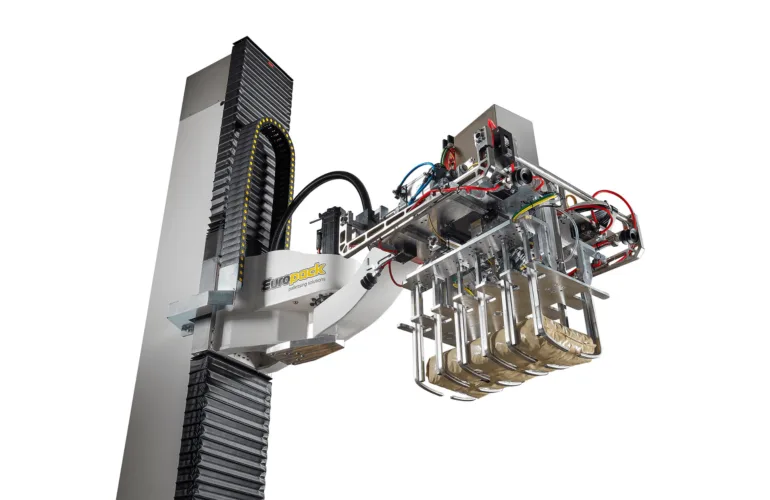Palletising is the process of sorting, transferring and stacking packages onto a pallet and as the last phase of the production process, it’s critical to keep it moving. Therefore, it’s not surprising that more and more manufacturers are recognising the benefits of introducing automation at this point and interest in warehouse palletisers has increased significantly as a result.
Why introduce warehouse palletisers?
Palletising by hand can be slow and repetitive, lead to inconsistent pallet stacking and result in manual handling injuries to staff. Conversely, robots are generally faster, stronger, more durable, and more reliable than manual operators.
There are many different palletisers available to suit a wide range of applications and each can be configured alongside other production line facilities too. This means that once we understand your requirements, we can create a bespoke solution for your warehouse or factory – exactly what we did for this chemical production company.
The benefits of introducing palletisers
As a business, automatic palletisers allow you to:
Speed up the packing process
Even low speed and low output palletisers can work faster and more consistently than a human operative. Bottlenecks are reduced and productivity increases.
Ensure consistent throughput
Machines don’t need to take breaks or holidays and they don’t suffer from illness, stress or ‘off’ days. Consistent throughput means more items packaged and sent out, which has a direct impact on the bottom line.
Manage your wage bill
Rather than paying people to do repetitive, manual tasks, you can pay them to do a role that adds real value to your business instead.
Reduce injuries and injury-related absences
A third of all workplace injuries are a result of manual handling. Minor aches and pains may cause tasks to be completed more slowly and more serious injuries can lead to extended periods of absence and even legal action against your company. Using a machine for heavy lifting reduces that risk.
Make more efficient use of floor space
Palletising systems can be designed to fit a specific space, so you can make the most efficient use of the allocated area.
Just one of these benefits would be a good reason to invest in automation – a palletiser delivers all five.
Choosing a robotic palletiser
We work with leading manufacturers Europack, Clevertech and Lita to bring you the widest range of automatic palletisers, each suited to different products and environments and with the ability to accommodate specific production speeds, existing lines and other requirements.
There are three main types of palletiser:
1. Cartesian or gantry palletisers are characterised by the structural beams and axes which allow products to be moved in three directions to create complex pallet patterns. While they’re low speed and low output, they’re also extremely flexible.
2. Layer palletisers collate a full layer of products or boxes onto a table before placing it on the pallet. This larger output of up to 60 packs per minute means they’re used for higher-speed applications and heavy or awkward packs that are difficult to handle.
3. Robotic palletisers benefit from a relatively small footprint and the ability to change the layer pattern. They can assemble mixed pallets as well as palletising different items simultaneously and are cost-effective to install. Their disadvantage is their slow speed and low output.
Whichever type of palletiser you choose, its installation has the potential to transform your warehouse or manufacturing operations making them more efficient, more productive and ultimately, more successful.




